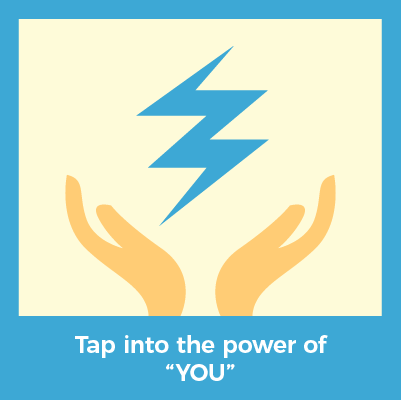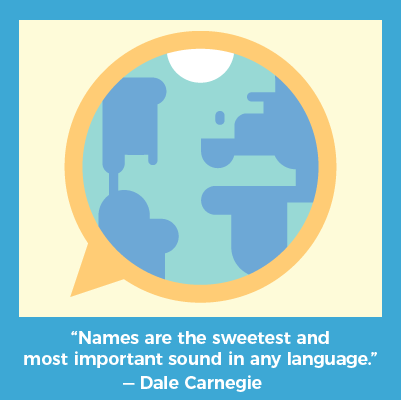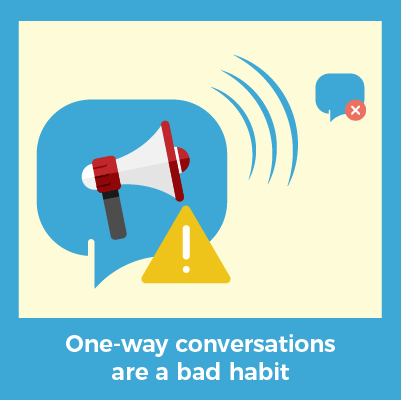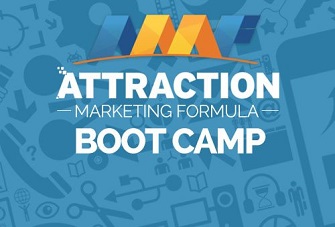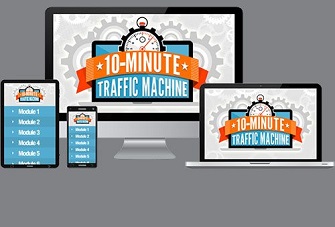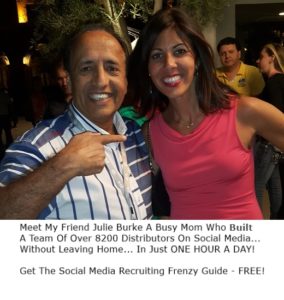On my blog my aim is to constantly bring value to Network Marketers and Entrepreneurs looking to build their business faster using the Internet. I have a policy of publishing articles from authors I value and respect. Today’s guest blog post is from my good friend Andrew Draughon talking the power of pronouns in persuading your prospects.
Ever wonder how you can encourage your prospects to listen to you, hang on your every word, and always be hungry for more…
…every single time you open your proverbial mouth?
{Hint: the key word here is “YOU.” More on that in a moment.}
Well, despite popular belief, becoming a master communicator isn’t about being a brilliant wordsmith or the loudest voice in the room.
Not by a long shot.
In fact, today you’re going to learn how…
Three simple letters can make or break your ability to communicate with your prospects!
Seriously.
Don’t let anyone tell you that you need to memorize any complicated scripts or reinvent the wheel to be an effective marketer.
This rings true from your marketing copy to face-to-face conversations.
Once you’ve got these three letters on lock-down, you’re golden.
It’s one of the oldest tricks in the marketing playbook (that so many of us tend to screw up).
Heck, I’m guilty as charged!
But before we get into it, we need to talk about a quick study that could very well transform the way you talk to your audience.
Hey, it might even change the way you speak to your spouse, best friends, or kids.
If nothing else, I bet you’ll get a kick out of it.
So let’s dive in!
Why every marketer should mind their pronouns
Now, you’ve heard about how marketing ultimately boils down to a science, right?
After all, millions of dollars are poured into ad research year after year.
So advertisers have a pretty darn good idea of what makes people tick, and that’s why it’s so important to pay close attention to all aspects of human behavior as a modern marketer.
Alright, so here’s the meat of it…
Dr. James W. Pennebaker, of the University of Texas, discovered some fascinating data regarding the way that we use pronouns.
Specifically, he wanted to conduct a study pitting first person pronouns (“I” and “me”) against second person pronouns (“you” and “we”) to understand their impact in social settings.
To test his hypothesis, Pennebaker ran four studies in which he grouped business school students into 41 four-person teams.
The teams were instructed to come up with ways to improve customer service for a fictional company.
The results were striking to say the least.
The study found that those labeled “natural leaders” in their groups organically used the word “I” almost one-third less than the non-leaders.
So the leader’s speech patterns would be something like…
“Hey, you do this, and you do this, and you do this”
Meanwhile, the non-leaders would sound something like…
“I think this, or I’ll do that, or here’s what I think.”
See where this is going?
The findings suggest that leaders are outwardly focused and non-leaders are inwardlyfocused.
Additionally, those who constantly rely on “I” are likely less confident than those who limit their use of the word.
When you use “I” every other word, you essentially put yourself on a lower “peg” regardless of who you’re talking to.
The key takeaway here?
Leaders and those confident in themselves limit their use of the word “I” and focus their conversations on others in the form of “you.”
Meanwhile those less sure of themselves use “I” and do the opposite.
So ask yourself…
Are you a leader, or an “I” addict?
How to make sure nobody tunes you out
The results of this study apply brilliantly to the world of marketing.
Think about it…
What’s the best way to immediately cause someone to tune you out?
Start talking about yourself.
(And never stop.)
It doesn’t matter if you’re dealing with your prospects or a blind date.
One-way conversations represent a bad habit that’s hard to break (and is rarely something we do consciously).
There’s quote from Dale Carnegie, author of the seminal How to Win Friends and Influence People, that’s gold:
“Names are the sweetest and most important sound in any language.”
Good ol’ Dale has a solid point.
You simply can’t afford to make everything about “me” and “I.”
What stake do your prospects have in your conversations or ads if their wants and needs aren’t being addressed?
Now, as marketers…
We’re constantly encouraged to tell our stories, right?
Unfortunately, many people in our space use this as an excuse to talk their prospects’ ears off (without getting to the point, which benefits the listener).
Heck, I know I’ve done this before.
For example, here are some sample hooks you might come across in our world:
- “Here’s the one trick I used to turn my business around after years of struggling…”
- “Today, I’m going to reveal the number one piece of marketing advice I’ve ever received…”
- “I had my first six-figure year in 2017 (and it’s not even August yet!) Here’s how I did it…”
Not bad, right?
But they could be SO much more compelling.
These hooks reek of “Hey, look at me! I’m so cool!”
And sure, they might pique your prospects’ interest, but they lack any sort of personal connection to your audience.
Here’s the thing:
Your audience isn’t worried about your“weird” tricks and “six-figure” secrets.
They want their own.
Therefore, you need to write hooks that speak to their desires (rather than stroke your ego).
For example…
- “Here’s a simple trick you can use to turn your business around, no matter how long you’ve been struggling…”
- “Here’s the most important piece of marketing advice you’ll ever receive…”
- “Want to have your first six-figure year in 2017? Well, here’s exactly what you need to know…”
And so on.
FEEL the difference?
Becoming a better communicator means finding that sweet spot between “you” and “I” when it comes time to talk to your prospects.
But how do you make sure that you don’t become “that” guy or gal that just won’t shut up?
Mastering the “I” vs. “you” ratio
Simply put, you’re going to need to make a conscious effort to tap into the power of “you.”
First and foremost, this means avoiding first person pronouns as much as you possibly can.
That doesn’t mean that you can never say “I” in your copy, but bear in mind that “you” is so much more meaningful to your readers.
Sure, if you’re recalling a personal anecdote, it’s totally fine to slip in an “I.”
That doesn’t give you an excuse to go overboard or start ranting, though.
When in doubt, strive to follow the 80/20 rule.
That is, 80% of your copy should be written in second person (“you”) and no more than 20% should be written in first-person (“I”).
If you want to double-check your copy to make sure that it’s primarily written in second-person, simply use the “Find” function (CTRL+F) on your copy to take a more critical look at your “Is” and “mes.”
Seriously, count ’em out.
And make sure you’re using second-person pronouns 5x more than first-person ones.
By the way, you should…
Make an effort to always write in the second person
This ensures that you make establish an immediate connection with your reader no matter what you’re saying or selling.
This is actually a trick that many of the top YouTubers use.
There’s a study out there that notes that videos that use the word “you” within the first five seconds garner 66% more views than those that don’t.
That’s an insane amount of engagement for one measly word!
Again, that’s the power of “you.”
Rather than talking at your audience, you need to start a conversation with them.
Less “I,” more “you.”
How YOU can score more prospects
By implementing these principles and leveraging the effectiveness of second-person pronouns, the task of talking to your prospects becomes significantly less daunting, because now you’re positioning yourself as a leader.
And the more leadership you exhibit, the more prospects you’ll naturally attract, and the more likely your marketing messages are to stick.
So, now you know how to better approach your prospects.
But the question remains…
How will you open the floodgates of traffic to your business?
Thankfully, you’ve already won half the battle now that you know how to effectively engage your audience.
Honestly, traffic is easy (once you know how to convert).
But if you aren’t 100% sure how to get started…
We put together a point-for-point tutorial revealing our exact advertising process in a 100% FREE traffic workshop, hosted by none other than Tim Erway, our co-founder and CEO, who’s generated over 30 million dollars in online revenue (and counting).
Simply pick a time and register right here.
You’ll discover how you can put together a profitable ad campaign in just 10 minutes a day with as little as $10 in initial ad spend.
In fact…
We’ve used the exact formula to turn a $10 test campaign into $141,246.30 in sales.
And Tim will show exactly how we did it.
So if you haven’t registered yet, what are you waiting for?
Pick a time that works for you to attend Tim’s traffic workshop right here.
Until next time.
Facebook
Linkedin
Twitter
Email Me
P.S. If you found value in this blog post please LIKE, COMMENT and SHARE with someone who can benefit from this.
Featured Services To Boost Your Business
Are You A Network
Marketer?
Free 10-Day Online Recruiting Course Shows You How to Recruit – Rejection Free!
Click Here To Learn More!
Learn How To Recruit
Using Social Media!
Create A Massive Recruiting Surge In Your Business With Social Media…
Click Here To Learn More
Do You Want More
Traffic & Leads?
Discover the Simple Method We Used to Produce a 1348% ROI on Our Advertising.
Click Here To Learn More!



